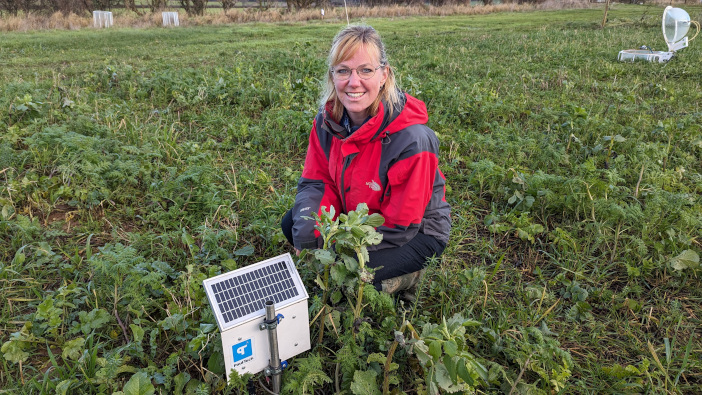A study at the University of Leeds Farm is reportedly showing the benefits of regenerative agriculture. Comparing soil health, crop production, greenhouse gas emissions and profit from various farming systems, data has been collected using state-of-the-art soil stations from Estonian ag-tech company Paul-Tech.
Some of the 12mx40m plots were ploughed and power harrowed, while others underwent minimal, non-inversion cultivations. Cover crops, living mulches, manures, livestock and herbal lays were also used throughout the trials.
Each plot received three treatments of nitrogen, with nutrient and water availability measured at 8cm and 20cm depths using the Paul-Tech soil stations. These revealed that plots with minimal cultivation held more nutrients and water around the root zone for longer.
As a result, these plots recorded a larger nutrient release after fertilisation and greater availability at a depth of 8cm. In contrast, water drained through the ploughed soil, leading to a significantly reduced nutrient release and fewer nutrients available to the plant.
Soil temperature was also impacted by the cultivation method, with ploughed plots experiencing greater changes over the course of the trial. It froze when air temperatures dropped below zero, whereas the minimal cultivation plots maintained a more stable temperature.
Commenting on the study findings, Paul-Tech chief executive Mikk Plakk, described them as ‘fascinating’. He said: “The data from our soil stations clearly shows soil nutrient availability and temperature differences between plots with different cultivation methods.
“For example, the soil in the conventional ploughed plot froze at root level and showed significant temperature differences while the minimal cultivated plots didn’t freeze and temperatures were relatively consistent in the root zone.
“Also, in the minimal cultivated plots, the soil was much more effective at holding water, which meant far more nutrients were available at 8cm than was the case in the ploughed plots.
“The findings have a significant bearing on how farmers should be treating soil. They strongly suggest cultivation methods have the potential to significantly improve soil and plant health while reducing the amount of inputs they need to apply.”
The soil station combines real-time sensor data with weather and satellite data to produce agronomic recommendations for growers, reported via an online dashboard. It is currently working on commercial farms in Scandinavia and Eastern Europe and is being launched in the UK at Lamma..
“Getting access to real-time, high frequency data from the soil station was vital for this study and will be equally valuable for farmers,” Mr Plakk added. “This level of insight would not be available without the ability to measure water and nutrient movement throughout the soil, which our system has been specifically designed to do.
“As the study continues, we expect to discover further insights into how different cultivation techniques impact on soil health, the environment, and the farmer’s bottom line.”
The trials at the University of Leeds have been led by Dr Ruth Wade, research fellow. She said: “The results coming from this regenerative agriculture plot trial will provide important data on the impacts of different farming systems both on the environment but also for the farm business.”
For more information go to www.paul-tech.com



